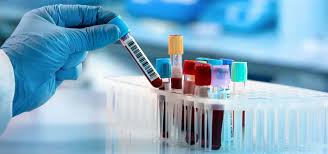The Significance of Diagnostic Tests in Global Health
In the realm of public health, Diagnostic Test plays an indispensable role. Their ability to accurately identify diseases, monitor health trends, and inform treatment protocols underpins effective healthcare delivery. The approval of the new mpox Diagnostic Test by the WHO exemplifies this crucial function in combating infectious diseases.
Understanding the Role of Diagnostic Tests
Diagnostic tests serve multiple purposes, ranging from the early detection of diseases to ongoing monitoring of treatment efficacy and the overall health status of populations. Early detection is vital as it allows for the timely initiation of treatment, often preventing complications and reducing the spread of contagious diseases. For example, in the case of chronic illnesses like diabetes or hypertension, early diagnosis through reliable testing can lead to effective disease management, improving patient outcomes and reducing long-term healthcare costs.
Similarly, in the context of infectious diseases like mpox, rapid and reliable testing is essential to identify and isolate cases promptly, preventing outbreaks from spiraling out of control. By identifying infected individuals early, healthcare systems can implement containment measures, administer appropriate treatments, and reduce transmission rates.
The Impact of Timely Diagnostics on Public Health
The advent of rapid Diagnostic Test has revolutionized healthcare delivery, particularly in emergency situations. The ability to receive immediate results can dramatically change patient outcomes. For instance, in the context of the Mpox outbreak, quicker identification of infected individuals allows for prompt isolation and treatment, thereby reducing transmission rates.
A significant challenge remains in many parts of the world, especially in low-income countries where access to Diagnostic Test is limited. The WHO’s new Mpox test represents an important step towards closing this gap. By ensuring that diagnostic capabilities are not only available but also accessible, we can better equip healthcare systems to respond to emerging infectious diseases.
Bridging the Gap in Health Disparities
The approval of the mpox Diagnostic Test also underscores the need for equitable access to healthcare resources. Health disparities often exacerbate the spread of diseases in underserved populations. The introduction of accessible and efficient testing methods can help bridge these gaps, allowing all individuals, regardless of their socioeconomic status, to receive timely and appropriate medical care.
As highlighted by Yukiko Nakatani, the WHO’s commitment to increasing access to quality-assured medical products is crucial. Empowering health authorities with the tools necessary for effective disease management is an essential component of improving health outcomes globally.
Challenges and Opportunities
While the introduction of the Rapid Diagnostic Test represents a significant advancement, numerous challenges persist in ensuring its effective implementation on a global scale. One major hurdle is the need for training healthcare professionals, not only in using these tests correctly but also in interpreting results accurately and making informed clinical decisions based on them. In many low-resource settings, healthcare workers may lack access to adequate training programs or face barriers such as language differences and limited technological infrastructure, which can hinder the widespread adoption of these diagnostic tools.
Furthermore, maintaining the quality of testing supplies is critical, as any compromise in the integrity of these supplies could lead to inaccurate results, ultimately affecting patient care and public health strategies. The logistical challenges of distributing these tests to remote or underserved communities add another layer of complexity. Ensuring that these tests reach the populations that need them most requires robust supply chain management and coordination between various entities involved in healthcare delivery.
The Future of Diagnostic Testing
As we look to the future, the potential for advancements in Diagnostic Test is immense. The integration of technology, such as telemedicine and artificial intelligence, could further enhance the accuracy and efficiency of testing processes. These innovations promise to transform healthcare delivery, making it more proactive and responsive to emerging health threats.
In the context of mpox and other infectious diseases, the ongoing development of rapid and reliable Diagnostic Test will be crucial. They are not merely tools for diagnosis; they are essential components of a comprehensive public health strategy aimed at prevention, containment, and management of diseases.
Conclusion
The WHO’s approval of the new mpox diagnostic test marks a significant milestone in the global health landscape. This development underscores the critical importance of accessible and reliable diagnostics in managing infectious diseases and protecting vulnerable populations. As demonstrated with the mpox outbreak, timely diagnostics are not just a tool for identifying and containing infections but are also central to effective public health strategies aimed at minimizing transmission and improving patient outcomes.
The broader implications of this advancement extend beyond mpox. As global health continues to face challenges from emerging infectious diseases, the need for rapid, accurate, and accessible diagnostic tools will only become more pressing. These tools form the foundation for proactive healthcare, enabling early detection, timely intervention, and efficient resource allocation—factors that are essential in controlling the spread of disease and reducing health disparities.







